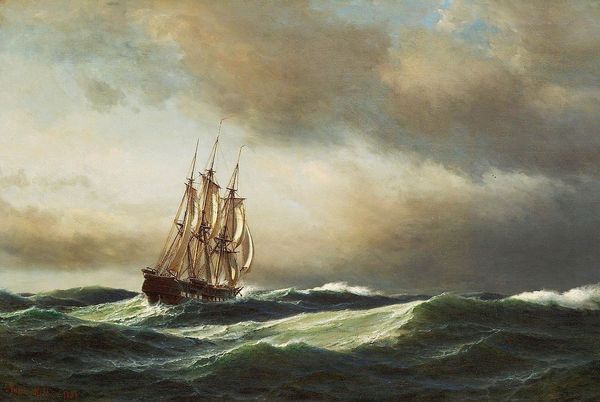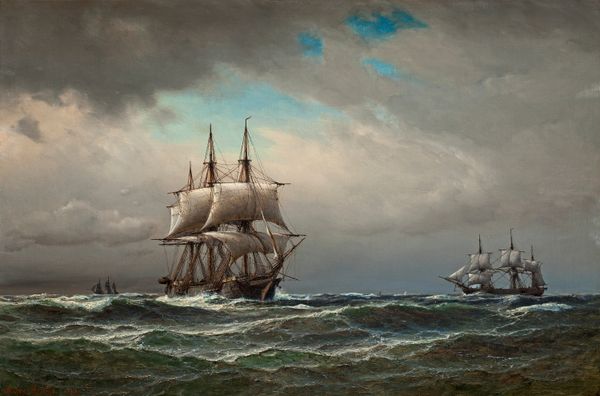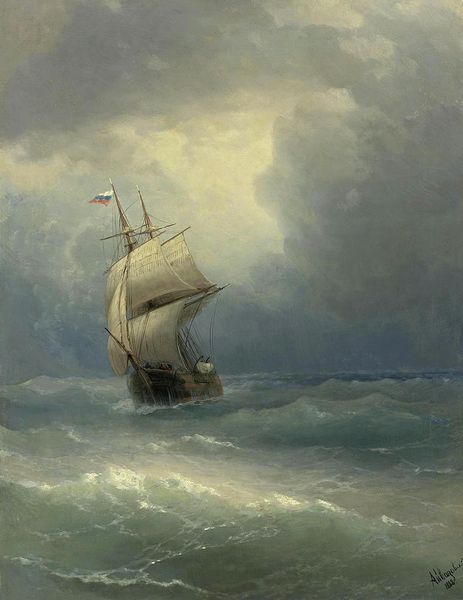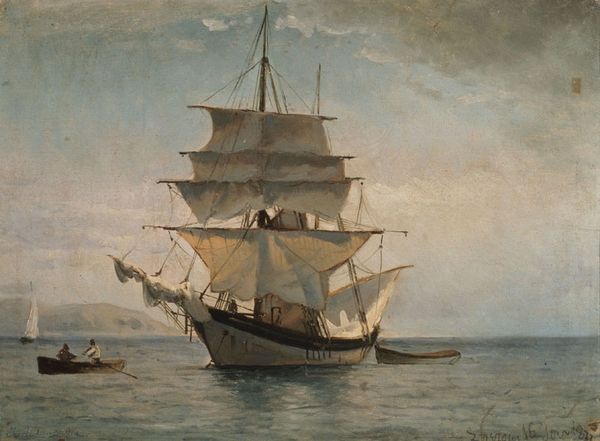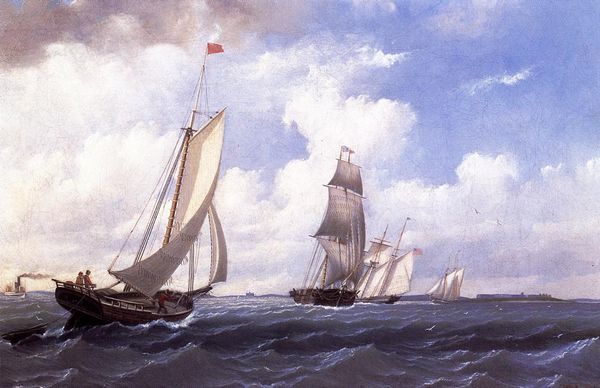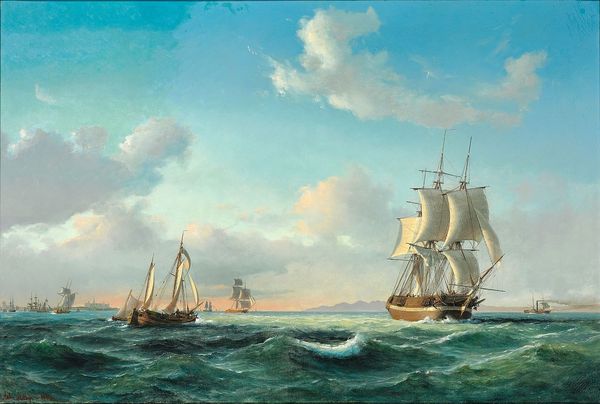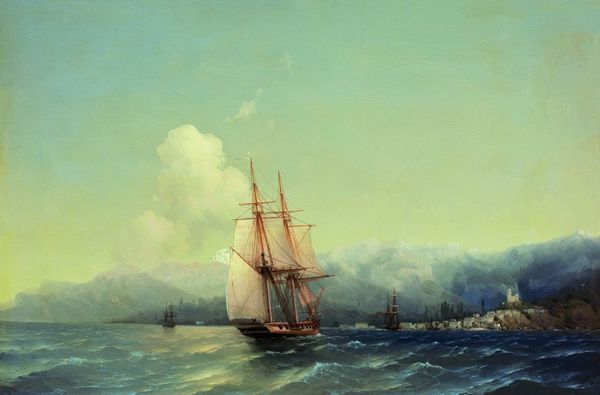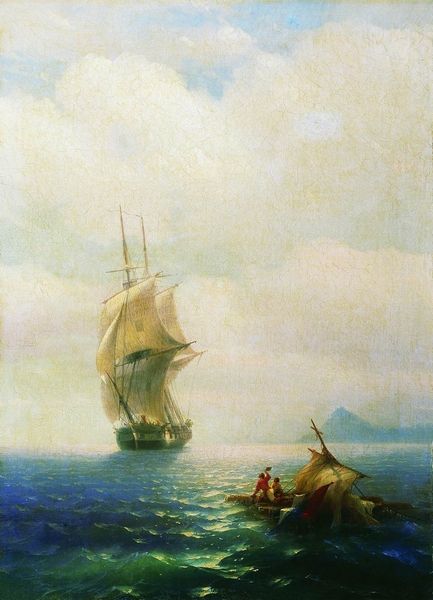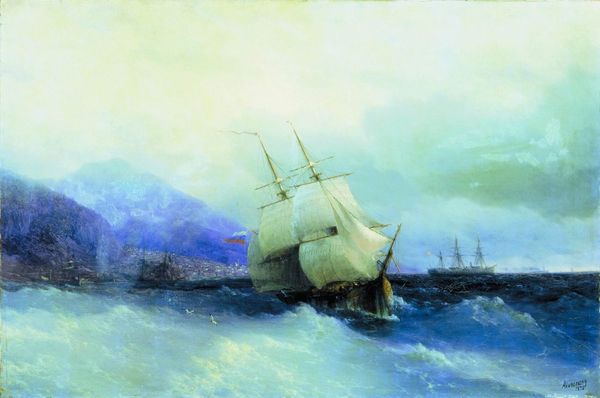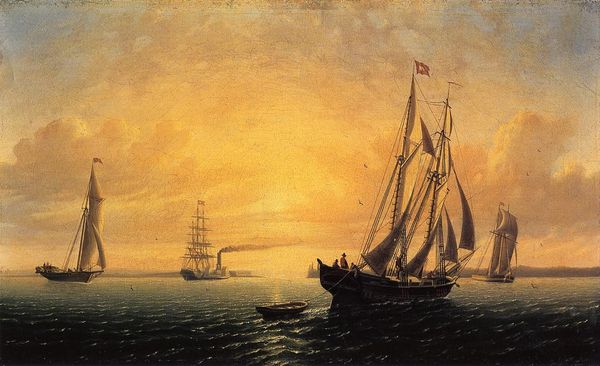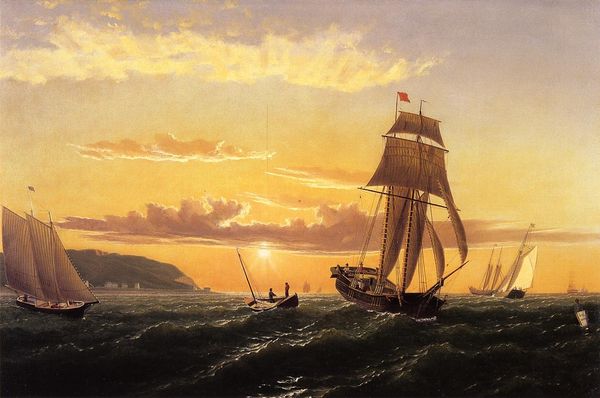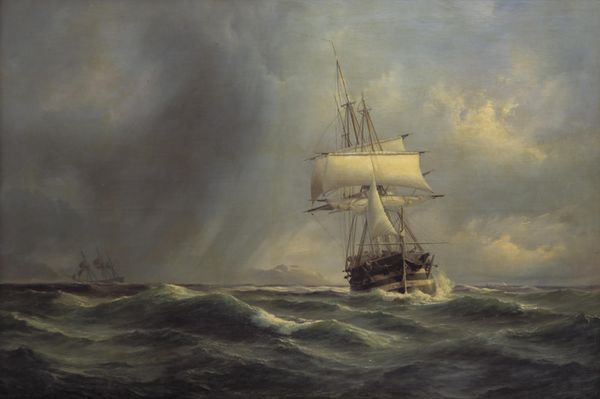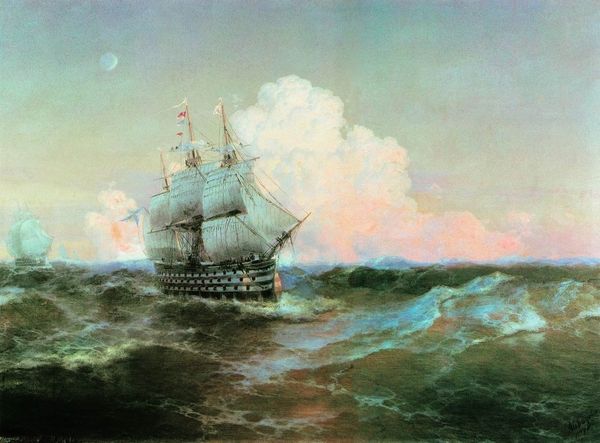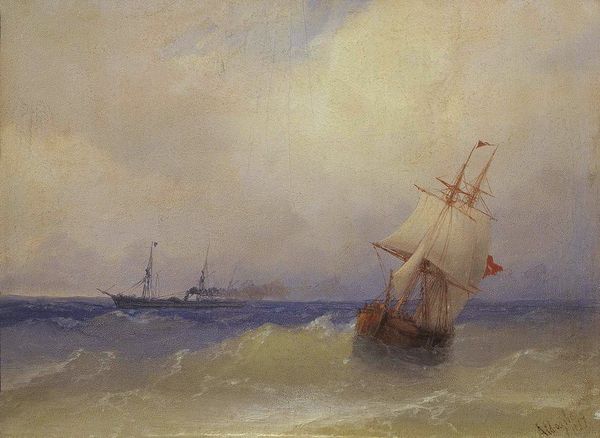
Copyright: Public domain
Curator: Look at this stunner—William Bradford’s “Brigantine off the Lee Shore,” painted in 1863. It’s quite a turbulent scene, rendered in oil on canvas. Editor: My first thought? I can almost feel the salt spray on my face. It's the kind of scene where you just *know* something dramatic is about to unfold, a moment hanging heavy with unspoken stories. Curator: Precisely. The painting captures a brigantine battling against a menacing shore. Bradford masterfully uses contrasting light and shadow to create a palpable sense of drama and risk. Consider the strong diagonals created by the ship's mast, the coastline, and even the turbulent wave crests. It gives the entire composition a sense of instability, which echoes the perilous situation. Editor: I love that Bradford wasn’t just showing off technical skill but really tapped into something primal here. I mean, it is a potent exploration of the sea’s unpredictable power, mirroring the Romantics’ fascination with untamed nature. It invites us to consider humanity's smallness when up against such elemental force. Like, have you ever felt dwarfed by something like this in life, moments where we confront something way bigger than ourselves? It makes me ponder that feeling. Curator: Certainly, the Romantics were all about this. And the interesting tension here comes from its embrace of both Romanticism and Realism, evident in its objective record of seafaring amidst nature's powerful forces. And the muted palette? The way the tones reflect the ominous atmosphere… It speaks volumes! Editor: Definitely a conversation starter about confronting life's wilder moments. Perhaps the next time a storm is brewing, I’ll try and see if my heart could catch just a fraction of what’s poured out in this painting! Curator: Perhaps, yes. Thank you for shining new light on "Brigantine off the Lee Shore!" I'm seeing this painting in a different light too.
Comments
No comments
Be the first to comment and join the conversation on the ultimate creative platform.
